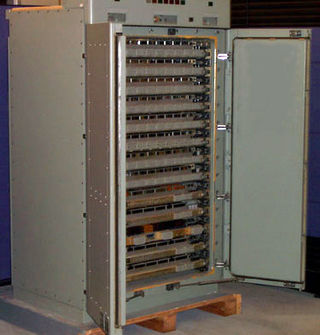Top Qs
Timeline
Chat
Perspective
AN/USQ-20
Early computer designed for the U S Navy From Wikipedia, the free encyclopedia
Remove ads
The AN/USQ-20, or CP-642[1][2][3] or Naval Tactical Data System (NTDS), was designed as a more reliable replacement for the Seymour Cray-designed AN/USQ-17 with the same instruction set. The first batch of 17 computers were delivered to the Navy starting in early 1961.[4]

A version of the AN/USQ-20 for use by the other military services and NASA was designated the UNIVAC 1206. Another version, designated the G-40, replaced the vacuum tube UNIVAC 1104 in the BOMARC Missile Program.
In accordance with the Joint Electronics Type Designation System (JETDS), the "AN/USQ-20" designation represents the 20th design of an Army-Navy electronic device for general utility special combination equipment. The JETDS system also now is used to name all Department of Defense electronic systems.
Remove ads
Technical
The machine was the size and shape of an old-fashioned double-door refrigerator, about six feet tall (roughly 1.80 meters).
Instructions were represented as 30-bit words in the following format:
f 6 bits function code j 3 bits jump condition designator k 3 bits partial word designator b 3 bits which index register to use y 15 bits operand address in memory
Numbers were represented as 30-bit words. This allowed for five 6-bit alphanumeric characters per word.
The main memory was 32,768 words of core memory.
The available processor registers were:
- One 30-bit arithmetic (A) register.
- A contiguous 30-bit Q register (total of 60 bits for the result of multiplication or the dividend in division).
- Seven 15-bit index (B) registers (note: register B0 is always zero).
Remove ads
See also
References
External links
Wikiwand - on
Seamless Wikipedia browsing. On steroids.
Remove ads
